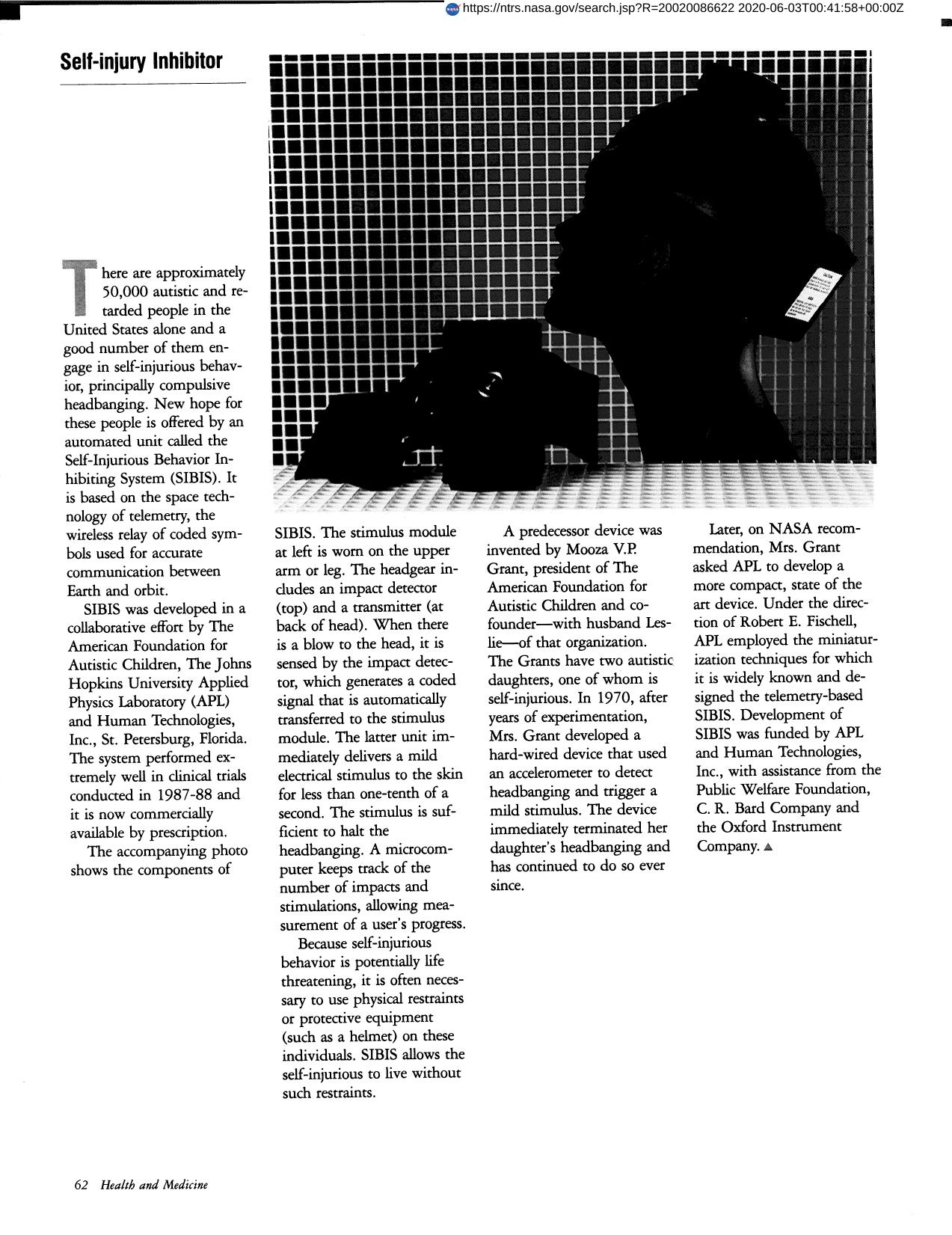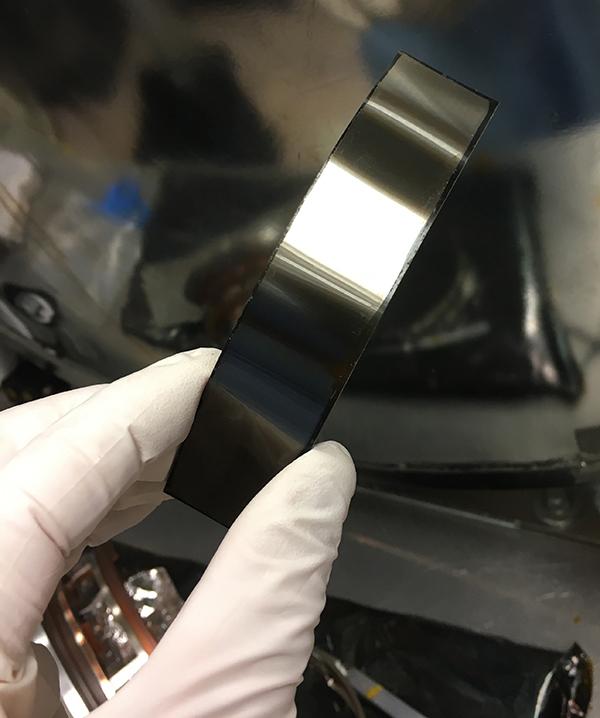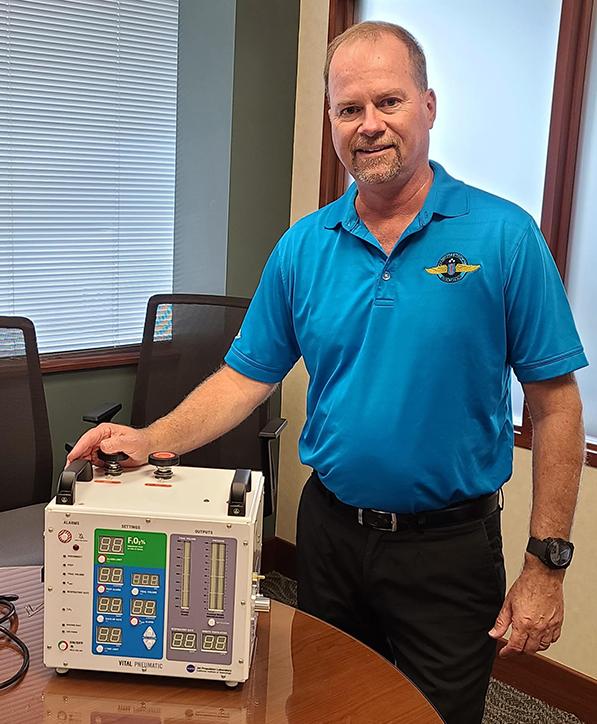
Self Injury Inhibitor
There are approximately 50,000 autistic and retarded people in the United States alone, and many of them engage in self-injurious behavior, principally compulsive headbanging. Hope is offered by an automated unit, manufactured at Johns Hopkins University, called the Self-Injurious Behavior Inhibiting System (SIBIS). Components of SIBIS are stimulus module which is worn on upper arm or leg, and headgear which includes an impact detector and a transmitter on back of head. When there is a blow to the head it is sensed by impact detector which generates a coded signal that is automatically transferred to stimulus module which delivers a mild electrical stimulus to the skin for less than 1/10 of a second. Stimulus is sufficient to halt headbanging. Microprocessor computes impacts allowing measurement of patient progress.
Full article: http://hdl.handle.net/hdl:2060/20020086622

Self Injury Inhibitor

Self Injury Inhibitor













